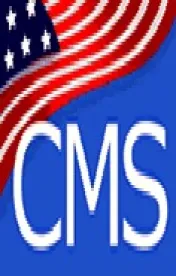The Centers for Medicare & Medicaid Services proposes significant changes to several key Medicare Part D Program components, such as the “any willing pharmacy” contracting requirement, that will affect all industry participants.
In its proposed rule for the Medicare Advantage (MA) and Part D Programs (Proposed Rule), the Centers for Medicare & Medicaid Services (CMS) proposes several major changes to the Medicare Part D Program, including the “any willing pharmacy” requirements. In doing so, CMS is proposing to change the way it administers several aspects of the Program, thus affecting all Program participants.
This is the second analysis of the Proposed Rule, addressing Part D Program proposals affecting Part D Plan Sponsors (Sponsors), pharmacy benefit managers (PBMs), all types of pharmacies and pharmaceutical manufacturers. A previous On the Subject addressed issues of interest for both MA Organizations and Sponsors. Forthcoming On the Subjects will focus specifically on risk adjustment data validation proposals and CMS’s proposed implementation of Section 6402 of the Affordable Care Act (ACA) and its overpayment provisions for the MA and Part D Programs.
Comments on the Proposed Rule, which was published in the Federal Register on January 10, 2014, are due to CMS by 5 p.m. EST on March 7, 2014.
Re-Interpreting the Non-Interference Provision
The Secretary of the U.S. Department of Health and Human Services, “in order to promote competition under this [Part D] and in carrying out this [Part D],” may neither “interfere with the negotiations between drug manufacturers and pharmacies and [Sponsors],” nor “require a particular formulary or institute a price structure for the reimbursement of covered part D drugs.” (42 U.S.C. § 1395w-11(i).) In its initial interpretation of the statutory language, expressed in the August 2004 proposed rule and January 2005 final rule promulgating the Part D Program regulations, CMS interpreted the non-interference provision as extending to negotiations between any of the specified parties, including Sponsor-pharmacy negotiations.
In the Proposed Rule, CMS proposes a new interpretation of the non-interference provision as applying only to pharmaceutical manufacturers’ negotiations with pharmacies and Sponsors, respectively, and would not apply the provision to negotiations between Sponsors and pharmacies. In other words, CMS would read the phrase “between drug manufacturers and pharmacies and [Sponsors]” as effectively stating “between drug manufacturers and (i) pharmacies or (ii) Sponsors.” This new interpretation of the non-interference provision would remove this limitation on CMS’s regulation of the relationship between pharmacies and Sponsors. As described below, the agency is proposing several new requirements for Sponsor-pharmacy relationships, consistent with this new interpretation.
New “Any Willing Pharmacy” Requirements for Sponsors
CMS proposes a dramatic change in its interpretation and application of two interrelated statutory provisions: that establishing Sponsors’ obligation to contract with “any willing pharmacy,” and the provision giving Sponsors the flexibility to create tiered pharmacy networks for which a lower cost-sharing is imposed for Part D drugs dispensed at certain network pharmacies.
Since the Part D Program’s inception, CMS has interpreted these two provisions as requiring Sponsors to include in their pharmacy networks any pharmacy willing to meet the Sponsors’ standard terms and conditions. Sponsors could, however, contract with a limited number of “preferred” pharmacies pursuant to alternate terms and conditions, including assignment of a lower cost-sharing obligation for covered Part D drugs. Many of the existing preferred pharmacy arrangements reflected a pharmacy’s willingness to accept lower payment rates from Sponsors or other terms in exchange for the increased customer volume resulting from the lower cost-sharing status.
CMS proposes to require Sponsors using a tiered pharmacy design to develop two sets of contracting terms and conditions—“standard” and “preferred”—for every type of similarly situated pharmacy. Every pharmacy would have the opportunity to contract under the preferred terms and conditions under CMS’s proposal, thus eliminating Sponsors’ ability to develop exclusive arrangements with select business partners. Moreover, any pharmacy offering preferred cost-sharing would be required to meet a negotiated price “ceiling” established by the Sponsor, and this ceiling price must be less than the lowest negotiated price (the “floor price”) established by the Sponsor for covered Part D drugs dispensed by pharmacies with standard cost-sharing status.
The agency also proposes to restrict the number of cost-sharing levels that Sponsors may incorporate into their benefit designs. As described in the preamble (but not the regulatory text), a retail pharmacy could dispense Part D drugs under one of three cost-sharing levels: a standard or preferred rate for dispensing a monthly prescription, and a rate for dispensing an extended days’ supply (limited to no more than three times the monthly retail rate, consistent with current CMS policy). A mail-order pharmacy would be permitted to apply a monthly or extended days’ supply cost-sharing rate, subject to the limitations discussed below.
CMS’s proposals reflect a significant departure from current Part D pharmacy network requirements, imposing new restrictions on Sponsors’ ability to design pharmacy networks that complement their Part D Plans and capitalize on unique partnership opportunities. Although the agency states that Sponsors would be “free to negotiate even deeper discounts from individual pharmacies,” some Sponsors and pharmacies may question whether there would be a sufficient return on investment for such discounted prices if the Sponsor is unable to guarantee preferential status and increased volume relative to competitors.
Proposed Conditions for Pharmacies Receiving Preferred Status
In the 2014 Call Letter, CMS expressed concern that the lower cost-sharing available at Sponsors’ “preferred” pharmacies, combined with their higher negotiated prices for certain Part D drugs, increased costs for the Medicare Program. These concerns are supported by two separate studies on Part D drug prices released by CMS in 2013 in which the agency concluded that negotiated prices for Part D drugs were not consistently lower at preferred pharmacies compared to non-preferred pharmacies. Both studies omitted from their pricing analyses, however, the effect of pharmacy rebates, similar to pharmaceutical manufacturer rebates paid independently of the point-of-sale transaction, on the aggregate drug costs Sponsors estimate and incur. CMS proposes that Sponsors require pharmacies contracting under the preferred terms and conditions to offer “better (lower) negotiated prices on all drugs in return for the lower cost-sharing.” (79 Fed. Reg. at 1976 (emphasis added).) CMS requests comments regarding whether it should take an additional step and mandate that pharmacies with preferred cost-sharing status agree to a specific percentage discount off the negotiated price as compared to the pharmacies offering standard cost-sharing.
CMS’s proposal appears to be designed to work in conjunction with the agency’s proposed prohibition on pharmacy price concessions applied after the completion of point-of-sale transactions and submission of the corresponding prescription drug event data. This proposed change to the treatment of pharmacy price concessions seems to stem from CMS’s concern that Sponsors report certain pharmacy rebates as “direct and indirect remuneration” (DIR), rather than reductions in the negotiated price. The former can have the effect of reducing Sponsors’ bids, and thus member premiums. CMS is concerned, however, that allowing these pharmacy price concessions to be reported as DIR means Sponsors’ premiums “achieve a competitive advantage not from greater efficiency, but rather from a technical difference in how costs are reported to CMS.” (79 Fed. Reg. at 1972.) By prohibiting Sponsors from accounting for pharmacy rebates as DIR, any pharmacy price concessions would have to be incorporated into the negotiated price, and thus support CMS’s proposal regarding ceiling and floor negotiated prices for pharmacies with preferred or standard cost-sharing status. CMS also proposes to re-define the term “negotiated price” to reflect this change in treatment of pharmacy price concessions.
Interestingly, CMS’s discussion does not address the implications of its proposals for beneficiaries’ premium obligations. Some industry participants argue that, by requiring pharmacy rebates to be included in the negotiated price paid at the point-of-sale, only those beneficiaries purchasing drugs from those pharmacies offering the price concessions would benefit. On the other hand, allowing pharmacy rebates to be applied against the estimated and actual allowable drug costs incurred by Sponsors may reduce Sponsors’ bid submissions—and thus the direct subsidies paid by CMS to the Sponsors and the premium obligations for all beneficiaries enrolled in their Part D Plans—and the allowable drug costs determined during the annual reconciliation.
Significant New Provisions Affecting Mail-Order Pharmacies
CMS proposes a number of prescriptive new requirements that would significantly affect mail-order pharmacies and, in many ways, limit Part D Plan Sponsors’ ability to incentivize mail-order use.
-
Mail-Order Cost-Sharing: Although described only in the preamble and not in the proposed regulatory text, this proposal would require that a Sponsor, in order to meet the “any willing pharmacy” contracting requirements, must assign to mail-order pharmacies a cost-sharing obligation for one-month supplies of Part D drugs that is no less than the cost-sharing for a comparable one-month supply filled at retail. CMS believes mail-order pharmacies are most efficient when processing extended days’ supplies. CMS also indicates that it is considering adopting a separate requirement for cost-sharing that can be offered for initial fills of prescriptions dispensed by mail-order pharmacies. The agency does not appear to recognize discounted pricing achieved by mail-order pharmacies; this is consistent with the agency’s 2013 study that Part D drug negotiated prices vary at mail-order pharmacies and are not always less than retail pharmacy negotiated prices.
-
The preamble also includes a proposal that cost-sharing for an extended days’ supply dispensed by a mail-order pharmacy cannot be less than the cost-sharing obligation of a retail pharmacy with standard cost-sharing status. Although CMS “does not intend” to disincentivize the use of mail-order pharmacies, the agency similarly believes it is not appropriate to incentivize the use of mail-order pharmacies when gaps in therapy are more likely to occur and makes clear that it believes these gaps in therapy are more likely to occur for one-month supplies of Part D drugs. Based on this rationale, it is not clear why CMS would propose to impose a minimum amount on cost-sharing for mail-order extended days’ supplies—the very situations where CMS believes mail-order pharmacies add value. Taken together, the preamble to the Proposed Rule would seem to prohibit mail-order cost-sharing from being lower than retail in any circumstance, although the preamble discussion raises some questions as to CMS’s intentions.
-
Mail-Order Pharmacy Dispensing Standards: CMS proposes to create a mail-order fulfillment requirement that would require mail-order pharmacies to ship each prescription either three or five business days following receipt of the prescription, with the extended five-business day timeframe applying for “prescriptions requiring additional review,” such as those requiring clarification of illegible orders or coordination with multiple providers as part of drug utilization management. CMS explains that the time limits are based on industry standards. Under the Part D Program structure, Sponsors presumably would be responsible for their contracted mail-order pharmacies’ compliance with these standards.
-
One potential challenge with this proposal is that there may be numerous reasons for delay that are outside the mail-order pharmacy’s exclusive control and which may require cooperation and input from third parties, such as prescribers. Although the proposal does not address such circumstances directly, CMS states in the preamble (but not the regulatory text) that it would expect mail-order pharmacies to process prescriptions in compliance with this requirement 99 percent of the time.
-
Preferred Network Cost-Sharing Requirements: CMS’s proposal, described above, to require lower negotiated prices for all drugs at pharmacies offering preferred cost-sharing, and to expand access to preferred cost-sharing networks, is motivated by CMS’s conclusion, based on its studies of negotiated prices, that one of the most significant drivers of excess costs in preferred networks is the negotiated price for mail-order pharmacies. The agency noted that “most PBMs own their mail-order pharmacies, and we believe their business strategy is to move as much volume as possible to these related-party pharmacies to maximize profits from their ability to buy low and sell as high as the market will bear.” (79 Fed. Reg. at 1975.)
New Criteria Proposed for Part D Drug “Protected Class” Status
CMS proposes to promulgate criteria for determining categories and classes of Part D drugs that are of “clinical concern” (Protected Classes) as required by ACA § 3307 and, based on these new standards, proposes to reduce the number of Protected Classes from six to four for CY 2015.
CMS adopted two criteria to identify those Part D drug classes and categories that require protections beyond those offered by CMS’s administration of the Part D Program, including formulary oversight: (i) hospitalization, incapacity or death likely will result if access to a drug does not occur within seven days of the prescription being presented for dispensing, and (ii) more specific CMS formulary requirements would not be sufficient to ensure access to drugs necessary to treat the disease or condition. In applying these criteria for CY 2015, CMS proposes that anticonvulsants, antiretrovirals and antineoplastics all meet both of the Protected Classes criteria, and Sponsors’ formularies must include all Part D drugs in these classes. In addition, even though antipsychotics did not meet both of CMS’s proposed criteria, CMS proposes to use its exception authority to extend Protected Class status to antipsychotics for CY 2015.
Immunosuppressant and antidepressant drugs, both classes of which have been Protected Class designees since the 2006 benefit year, would not qualify for such status in CY 2015, meaning Sponsors would not be required to include on their formularies every Part D drug in these classes. CMS concluded that although hospitalization, persistent significant disability or incapacity, or death would likely will result if initial administration of the drugs in these classes does not occur within seven days of when the prescription is presented to be filled, the two drug classes do not meet the second criteria because CMS formulary requirements would suffice to meet the clinical drug-and-disease-specific applications.
As a result of the greater flexibility Sponsors will have in formulary development, the elimination of Protected Class status for immunosuppressants and antidepressants has the potential to affect entities at all stages of the drug distribution process, including drug manufacturers, Plan Sponsors, PBMs, pharmacies and beneficiaries. That said, CMS’s projections suggest that the initial financial effect may be minimal. CMS projects that its proposal to reduce the number of classes of clinical concern would generate savings of $720 million from CY 2015 to CY 2019, but $0 in savings for CY 2015; furthermore, “most” of the projected savings from CY 2016 to CY 2019 would be generated from the antipsychotic class, for which removal of Protected Class status has been delayed. Thus, unless and until such time as CMS removes Protected Class status from antipsychotics, the financial effect of the proposal may be limited and may very well be less than CMS’s stated projection of $720 million.
Affiliated Pharmacies and Other Proposals with Business Implications
CMS sets out numerous other proposals relating to other aspects of the Part D Program, including CMS’s proposal to prohibit pharmacies that are affiliated with a Sponsor from waiving cost-sharing obligations under the plan benefit package. The prohibition would apply even if the cost-sharing waiver is permissible under guidance from the Office of the Inspector General and CMS’s Medicare Prescription Drug Benefit Manual, such as for low-income subsidy-eligible individuals. The agency’s proposal is based on the premise that waiver of the cost-sharing obligation by the pharmacy equates to a waiver of the cost-sharing obligation by the affiliate Sponsor, and the latter is prohibited by the “uniform benefit” requirement. Notably, CMS’s proposal to impute to the Sponsor the cost-sharing waiver of its affiliate pharmacy is triggered automatically based solely on the related status of the two entities and regardless of the particular circumstances of the entities’ relationship, respective operations or the Sponsor’s bid submissions. The proposal also has potential to cause significant confusion for beneficiaries, who may not be aware of any corporate affiliation and therefore may not understand why certain pharmacies may waive a cost-sharing obligation while others may not.
Another example of CMS proposals is adoption of more stringent standards for new applicants to sponsor Part D Plans, including requirements regarding past experience and new testing of system capabilities post-application cycle. In both instances, Program newcomers would have to demonstrate to CMS the capability to administer prescription drug benefits based on past experience (of either itself, an affiliate or a contractor) prior to receiving a contract to participate under the Program.
Conclusion
The Proposed Rule reflects CMS’s dramatically different perspectives on prescription drug benefit administration compared to those held by the agency nine years ago, including on the role of mail-order pharmacies, relationships between Sponsors and pharmacies generally, and other aspects of Part D Plan administration. The current “way of doing business” under Part D likely will change significantly with CY 2015, and Sponsors and their partners likely will have mere weeks to respond to changes promulgated in the final rule and the June 2, 2014, bid deadline. Advance planning for potential changes and strategies for effectively and efficiently allocating resources will be critical for legal and compliance departments to address the various changes that are on the horizon.






 />i
/>i

